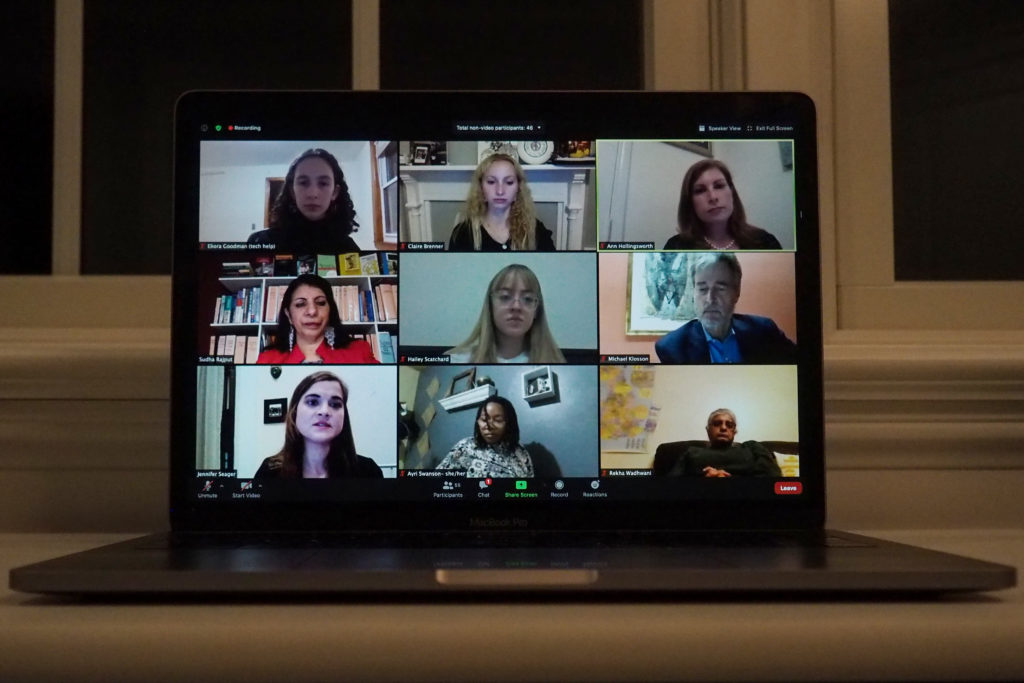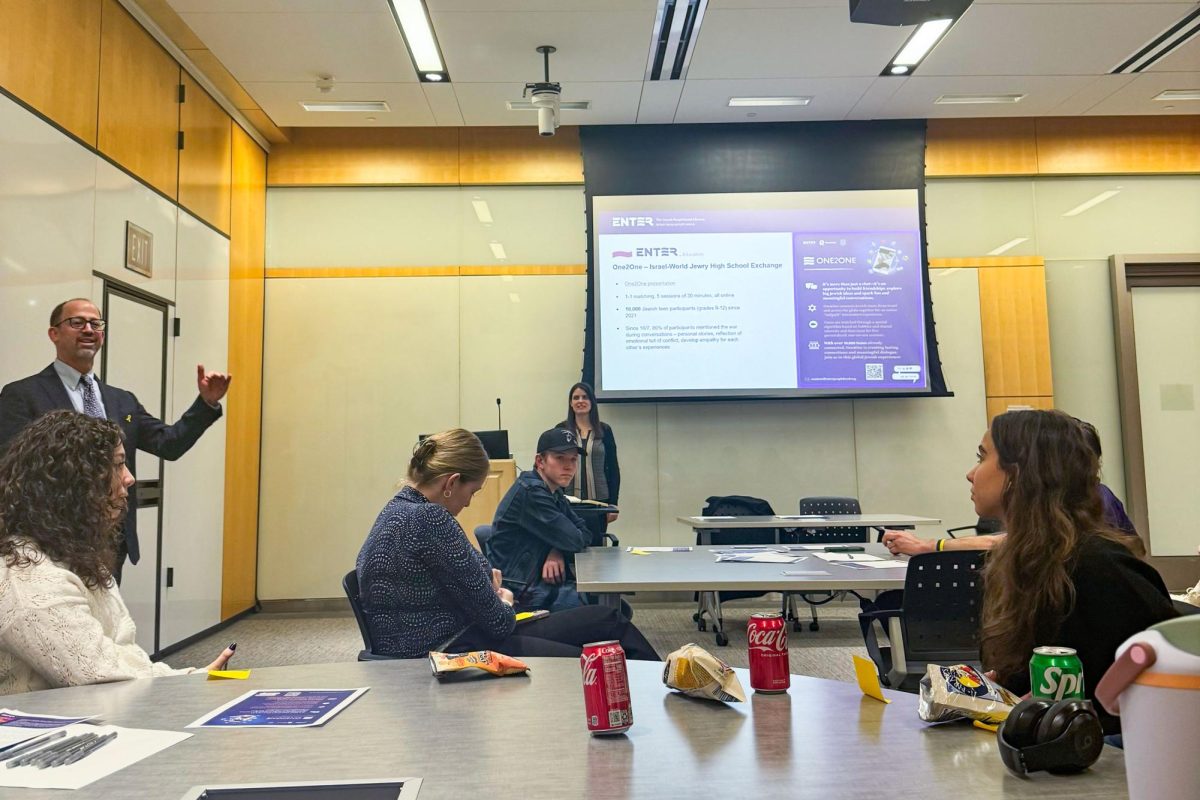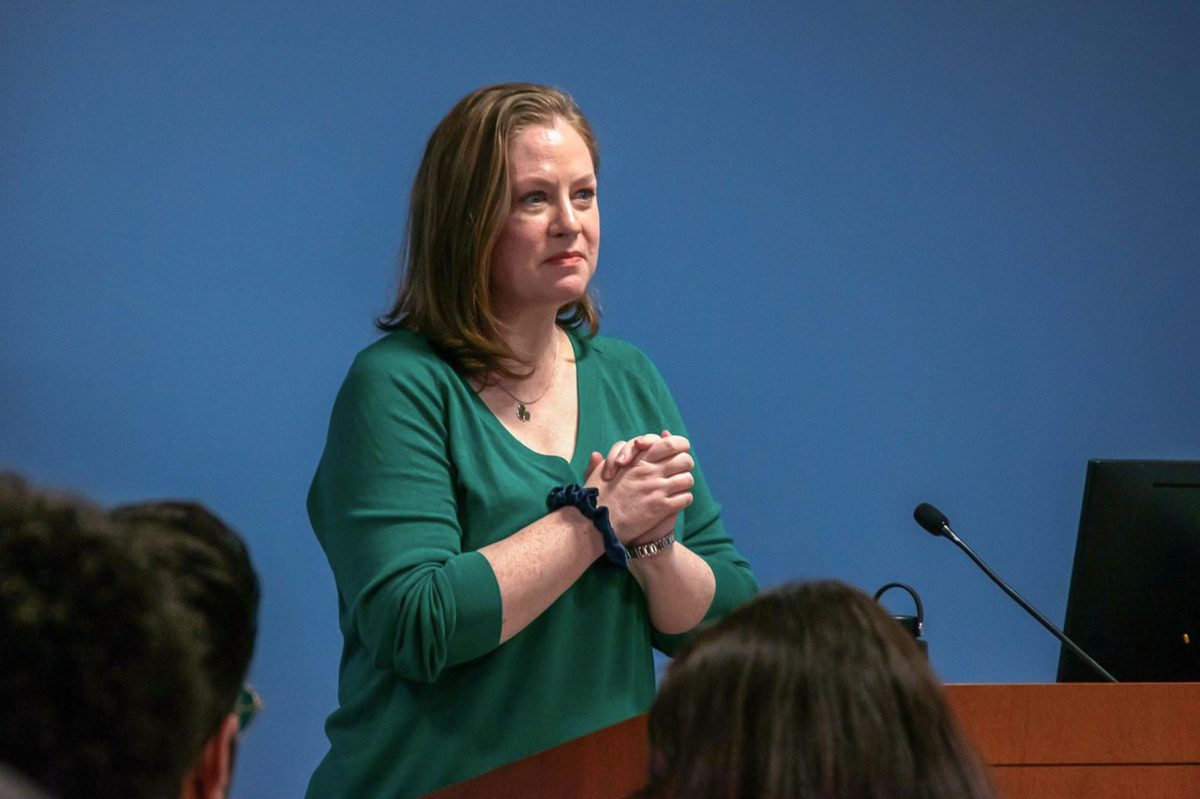A student organization hosted a panel of refugee experts on the COVID-19 pandemic’s effect on globally displaced populations Wednesday.
The panel consisted of a former U.S. ambassador to Cyprus, an official from a refugee-support organization and two professors who discussed the virus’s negative impacts on refugees and migrants and what steps need to be taken to rehabilitate displaced communities suffering from the pandemic. Junior Claire Brenner – the finance and logistics director of No Lost Generation GW, a group of student organizations that aim to shed light on children impacted by the Syrian refugee crisis – moderated the event.
Sadha Rajput, an associate professor of refugee and migrant studies, said countries like South Sudan had “weak” health care systems before the pandemic began. Even if they wanted to impose “precautionary measures” to the pandemic, these countries did not have the infrastructure to provide assistance and were forced to leave refugees in migrant camps, she said.
“Even if they wanted to take precautions, they didn’t have the option,” she said.
Still, health care systems in developed nations, like New Zealand, also struggled to provide their refugees with resources like ventilators because they were not prepared beforehand, Rajput said.
Ann Hollingsworth – the director of government relations and senior policy adviser for Refugees International, which advocates for assistance and protection for displaced peoples – said as countries with a large immigrant population, like Columbia, face the effects of the pandemic, like lockdowns and rise in the unemployment rate, locals and refugees face increased competition in the job market.
“This is a very troubling context when you have competition for jobs that are not available to the local population and they’re competing with refugees that are there,” she said.
Hollingsworth said in areas where extensive displacement is growing, like the United States, xenophobia is on the rise. She said governments that have already restricted access to asylum and refugee resettlement are using the virus as an “excuse” to continue to accelerate these “barriers.”
“The administration continues to slash and burn the refugee resettlement architecture within the United States,” she said. “And COVID was unfortunately used as a justification to temporarily halt refugee admissions.”
Jennifer Seager, an assistant professor of global health and economics, said local market closures and a loss of income from an unemployment increase risks food insecurity for refugees as lockdowns occur. She said some refugees do not have the same “safety net” that other governments offer to “low-income” populations, which can have long-term health impacts on children and adolescents who are in “key growth periods” of their lives.
“One of the things that we need to think about is not just how do we mitigate current negative impacts on income and increases in food insecurity and hunger, but also how do we start to develop programming to mitigate these longer term impacts that are going to come as a result of reductions in access to education and reductions in nutrition at key stages,” Seager said.
Michael Klosson – a former U.S. ambassador to Cyprus and the vice president for policy and humanitarian response for Save the Children, which provides protection and education to children around the world – said humanitarian organizations need to work together for displaced communities to fully recover from the pandemic’s impacts.
He said humanitarian actors can only address the problems of refugees partially. Displaced peoples need the support of the international community to improve their livelihood in the long term, including bigger actors like the World Bank, he said.
“We’ve been learning to bring together these different disciplines, different skills, different mindsets in order to put the people we’re trying to help first,” Klosson said.








